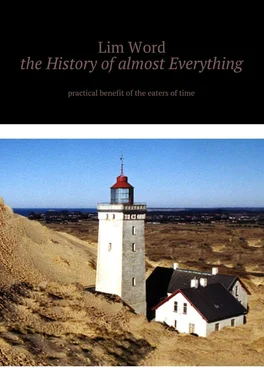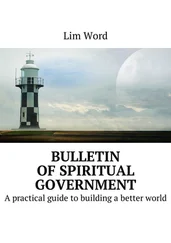7. Street Nikolskaya, in the early twentieth century, and now. The direction to the Lubyanka Square (the building of the state security bodies, the Cheka-NKVD-KGB-FSB, as well as the Central Department Store “Children’s World”).
8. Nikolskaya Street. View of the Nikolsky (now closed) gates of the Kremlin, to which, before the appearance of the Red Square, at the end of the 15th century, the highway led directly.
9. Prechistenskaya embankment. Metro Kropotkinskaya, down, along the Cathedral of Christ the Savior, and to the right. On the way you can see “The house on the embankment”, it is also the “House of Government”, built in 1931, known primarily for a large number of repressed residents – major statesmen.
In the photo, as you can see here, Moscow, the Kremlin, the bridge are almost unrecognizable – although this is exactly the place where the photographer took the photo. The stone staircase disappears, the elevation, the solid lantern, the scale of the streets and buildings is changing. What is it is the deception of vision, the property of optics of photographic apparatuses, or the actual anomalous property of space and time.
In general, there is a feeling that Moscow of the beginning of the twentieth century differs from the current capital in the same way as the ruddy, brisk, loving outfits and entertainment the girl differs from some pale who does not understand what she herself wants, a melancholic lady.
7. Orthodox church.
1) Throne (altar, from the Latin altarium, “high”, pommel of the altar). The name is common in the Orthodox tradition. Initially (in the pre-Christian era), the altar is constructed from the earth, clay, and stones (if possible, a solid stone block) in the places where the interaction with the higher force has most clearly occurred – at the creek, in a clearing, in a grove, at the top of a mountain. In Ancient Greece, the altar (a powerful stone foundation) is essentially the temple itself. The Throne of the Eastern Church is approximately equal to the altar of the Western Church.
The Orthodox throne is a square table, the place of the mysterious presence of God. Here are the sacred relics. (1) – antimins, scarf, with the sign of the cross, with stitched parts of the relics of some great martyr, and also the signature of the bishop of the diocese, to which the temple belongs. Antimins is a kind of document permitting the performance of the liturgy. When the service is performed, the antimension unfolds, a chalice and a discus are placed on it – vessels for wine and bread, necessary for communion. Only the priests in full service clothes can touch the scarf, or (at the time of out-of-worship service) with a ribbon trimmed (Greek επιτραχήλιον – that around the neck). In certain cases, due to its strength, the antimension can replace the throne itself.
(2) The Gospel (New Testament).
(3) One, or more often two, of the altar cross. Crosses are used for the celebration of the Liturgy, for the blessing of those praying to leave the temple at the end of the divine service, the consecration of water for the Epiphany, and especially solemn prayers.
(4) The tabernacle (kiwot). The sacred vessel, the casket, where the holy Gifts are stored – the Body and Blood of Christ, used for communion (Eucharist, from other Greek εὐ-χᾰριστία – thanksgiving, honor, gratitude). The body is round, somewhat bifurcated, as a sign of the divine and human nature of Jesus Christ, reminiscent of the seal of a piece of bread, a prosphora (προσφορά – “offering”), is made from wheat flour, with yeast, water and salt. Wine – in Orthodoxy usually red, sweet (Cahors). In the Latin rite, liturgical bread is called unleavened bread, a guest (Latin hostia – “sacrifice”), or a robe (Latin oblatio – offering, offering, gift), it is baked exclusively from flour mixed with water, and resembles a thin coin. Wine, as a rule – white.
A consecrated, functioning temple, ideally – a place where the contradiction between the spiritual and the material is removed, the heaven descends to earth, God incarnates in the world. You can add that the difference between the temporary and the transcendent, the eternal, disappears, one can feel the infinity of taste, so that he begins to like it.
The sacraments of the Eucharist consist of a) proskomedia (Greek “offering”), when the priest, after reading the prayers for the sending of the Holy Spirit, in the presence of many believers, but also with the closed Royal Gates, prepares the Blood and the Body on the Throne. Wine is mixed with water and poured into the chalice. Prosfora is cut with a special copy – a ritual double-edged knife with a triangular blade. b) Liturgies of catechumens (taught in the faith, and also penitent and excommunicated). In the great litany (the Greek “extended prayer”), global (then first) global, then smaller, general church and social, then personal petitions are raised. c) Liturgy of the faithful (there are only persons who have accepted baptism). The prepared Holy Gifts are solemnly transferred from the altar to the throne through the North Gate: before the iconostasis, believers. After that, the Royal Gate closes, the altar curtain is pulled up. The remaining priests read the eucharistic prayer anaphora, after which the Woof (lifting upward) of the Holy Gifts takes place. At this moment, mysteriously, wine and bread are converted into the Blood and Body of Christ.
The priests take communion, then they receive the Holy Mysteries of Christ and the laity.
In the Roman rite the Eucharistic Liturgy is called the Mass (perhaps from the Roman missio – mission, message). There are no fundamental differences. The service is conducted in Latin.
2) The altar. A quadrangular table, hidden in the same “clothes” as the throne, to the left of the high place (the northern part of the temple). The location of the sacred vessels, as well as bread and wine – gifts of Christians, suitable for the celebration of the Eucharist. In the intervals between the services, the veil is closed.
The upper part is a part of the Orthodox church opposite the throne, near the central part of the eastern wall. In a small niche, on a certain elevation there is a pulpit (throne, a high altar) for the bishop. The throne is surrounded by a semi-circle of seats (synthron) of priests of lesser rank. In some parish churches, the place is designated more only by an icon lamp, or by a tall candlestick with candles.
3) Altar. The space between the semicircular (eastern) wall is an apse and the iconostasis.
4) Ponomar (northern), it is sometimes “paradise”, because of the usual themes of the painting, the door in the iconostasis.
5) Sacristy (a storage room, a deacon). Place in the altar, several cabinets, or a separate room for storing the liturgical garb of priests and church utensils.
In the sacristy lead the southern, otherwise, the deacon’s doors of the iconostasis.
The spiritual person in charge of the sacristy is a sacristan. In Catholic churches, the sacristy is also called sacristy (Latin sacrum – sacred utensils). Mass begins with the solemn release of the clergy from sacristy. Here you can privately talk with a clergyman.
Ponomar – other Greek. παραμοναριος – “gatekeeper”, he is an altar boy, sexton, a servant of the Orthodox Church, obliged to ring bells, sing in the choir (elevations on the sides of the salt), monitor the order, serve during worship.
Deacon – from other Greek. διάκονος is a minister, a person passing service at the first, inferior priesthood degree. Below him in the church hierarchy is only the clerk, the subdeacon is a cleric (he is a true believer, but not ordained as a parishioner). The deacon does not have the right to perform the sacraments himself. Appeal to the deacon in solemn cases, usual, but not registered in the church protocol of the ROC: “Your evangelism”, “Your loud voice”, or “Your God-love”.
Читать дальше












